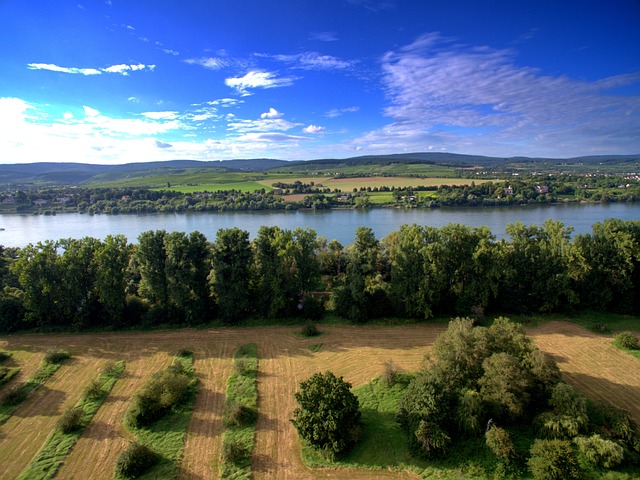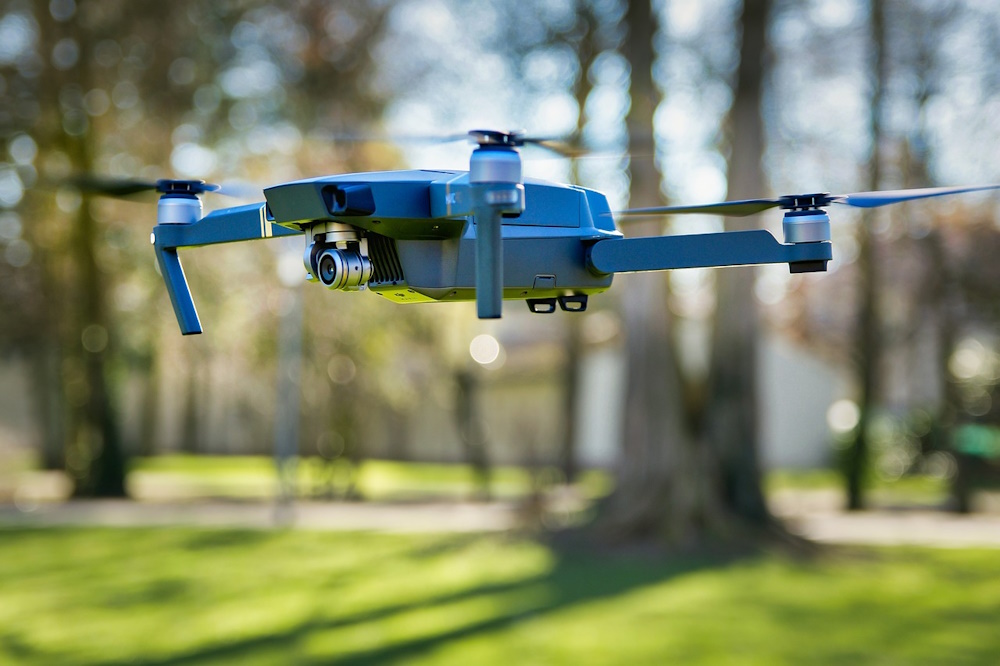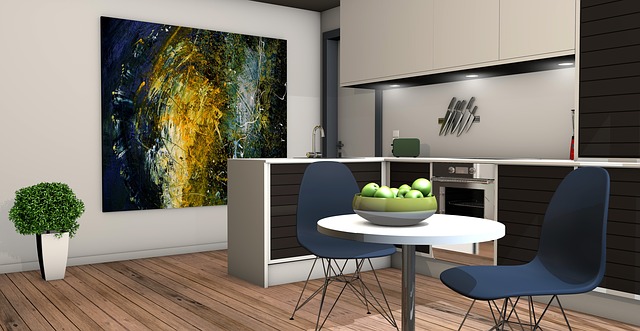Drones are now extremely popular and have evolved beyond being just fancy gadgets. They offer a doorway to a completely new realm of adventure and innovation. Whether it’s capturing stunning aerial photographs or simply enjoying recreational flying, drones have become incredibly appealing to both beginners and experts.
In this modern age of technology, drones have quickly become a source of fascination for many, and their popularity continues to rise.
Choosing the right drone is crucial for beginners. It can make or break your experience. Finding the best drone for your skill level and expectations is important.
This blog post is your ultimate guide to beginner drones. We will explore what sets them apart and guide you through essential factors to consider before purchasing. We will highlight the top choices in the market and provide clear insights into which drones are best for beginners.

Image by Harald Landsrath from Pixabay
Understanding Beginner Drones
What is a drone?
A drone is a small aircraft that flies without a human pilot. It uses multiple propellers to move in the air and has sensors to collect data from its surroundings. The drone can be maneuvered by the operator on the ground using a remote control that sends radio signals to the aircraft, ensuring safe operation.
There are two main types of drones: camera drones and toy drones without cameras. Toy drones are cheaper and suitable for children, while beginner drones for adults help improve flying skills and also allow taking photos and videos.
Key features and characteristics to look for in a beginner-friendly drone
A beginner drone is a drone specifically made for newcomers. It’s like a friendly neighbor that warmly introduces you to the world of flying in the sky. These drones are usually simple to operate, forgiving of errors, and come with features that make learning to fly them easy. They are the ideal choice for anyone starting their drone flying journey.
When searching for the perfect drone for beginners, there are a few important features that can greatly enhance your flying experience.
-
Ease of use
One of the key factors to consider when choosing a beginner drone for photography is ease of use. Look for a drone that offers intuitive controls, allowing you to focus on capturing stunning shots rather than struggling with complicated settings. Many beginner drones come with features like one-touch takeoff and landing, making it easier for newcomers to get started.
-
Stability
Stability is another key factor to consider. You’ll want a drone that can maintain its position steadily, even in light winds. Features like altitude hold or GPS assistance can help ensure stability, allowing you to focus on capturing stunning aerial shots or simply enjoying the flight without worrying about sudden drifts.
Image stabilization is another crucial feature to look for in a camera drone. This technology helps to eliminate unwanted vibrations and movements, ensuring that your photos and videos are sharp and clear. Whether you are capturing fast-paced action shots or serene landscapes, image stabilization will greatly enhance the quality of your footage.
-
Safety
Now, let’s talk about safety, which is absolutely essential, especially for beginners. The best drones for newcomers are equipped with safety features such as propeller guards to prevent accidents, automatic return-to-home functions in case of signal loss, and even geofencing to prevent drones from entering restricted areas. These features not only protect the drone itself but also ensure the safety of everyone around.
In addition, obstacle avoidance sensors are also important for beginners, as they help prevent collisions and accidents. These sensors use advanced technology to detect and avoid obstacles in the drone’s flight path, providing a safer and more enjoyable experience. This feature is particularly useful for beginners who are still mastering their piloting skills.
-
Flight time
Flight time and battery life are also factors to consider when choosing a camera drone. Look for a drone that offers a decent flight time, allowing you to capture a sufficient amount of footage before needing to recharge. Additionally, consider the battery life and charging time, as longer battery life and shorter charging times will allow you to spend more time in the air and less time waiting for your drone to recharge.
-
Image quality
Of course, image and lens quality are paramount when it comes to aerial photography. Look for a camera drone that offers good image quality, with high-resolution capabilities and the ability to capture vibrant colors and details. Additionally, consider the lens quality, as a high-quality lens will greatly enhance the overall image quality.
-
Budget-friendly
Affordability is another advantage of beginner camera drones. Unlike professional models, which can be quite expensive, beginner drones are generally more budget-friendly. This makes it easier for newcomers to enter the world of aerial photography without breaking the bank. With a wide range of affordable options available, beginners can find a camera drone that suits their needs and budget.

Image by Aleksejs Bergmanis from Pixabay
Top Picks for Best Drones for Beginners
1- Potensic Atom SE
BEST CHEAP BEGINNER DRONE

The Potensic ATOM SE is a foldable GPS drone with a 4K EIS camera. It weighs less than 249g, so it does not require FAA registration. It has a max flight time of 31 minutes and a max transmission range of 4K. It also has a variety of flight modes, including follow me, point of interest, and orbit.
The Potensic ATOM SE is a foldable GPS drone with a 4K EIS camera. It weighs less than 249g, so it does not require FAA registration. It has a max flight time of 31 minutes and a max transmission range of 4K. It also has a variety of flight modes, including follow me, point of interest, and orbit.
KEY FEATURES:
- 4K EIS camera: The camera is stabilized with a 3-axis gimbal, which helps to reduce shake and vibration. This results in smoother, more stable footage.
- 31-minute flight time: The ATOM SE has a flight time of up to 31 minutes, which is more than enough time to capture stunning aerial footage.
- 4KM transmission range: The ATOM SE has a transmission range of up to 4KM, which means you can fly it far away without losing connection.
- GPS auto return: The ATOM SE will automatically return to its home point if it loses signal or is running low on battery.
- Level 5 wind resistance: The ATOM SE can withstand winds of up to 31 mph, which means you can fly it in a variety of weather conditions.
- Foldable design: The ATOM SE folds up into a compact size, making it easy to transport and store.
REASONS TO BUY
- Excellent camera quality for a sub-250g drone. The Potensic Atom SE can shoot 4K video at up to 30fps and 1080p video at up to 60fps. The camera also has a 3-axis gimbal for smooth, stable footage.
- Long flight time of up to 32 minutes. The Potensic Atom SE has a large 2330mAh battery that can give you up to 32 minutes of flight time on a single charge. This is one of the longest flight times of any sub-250g drone on the market.
- Easy to use and fly, even for beginners. The Potensic Atom SE has a simple and intuitive design that makes it easy to fly. The drone also comes with a number of intelligent features, such as GPS return-to-home, obstacle avoidance, and follow me, that make it even easier to fly.
REASONS TO AVOID
- Fixed focus lens. This means that you will not be able to manually focus the camera.
- No collision avoidance. If you want obstacle avoidance, you’ll have to consider a more expensive sub-250g drone.
2- DJI Mini 3
BEST BEGINNER DRONE OVERALL

The DJI Mini 3 is a lightweight and compact drone that weighs under 249 grams, making it ideal for travel and everyday use. It has a 1/1.3-inch CMOS sensor with dual native ISO and chip-level HDR technology, which allows it to shoot 4K HDR video at up to 30fps. It also has a 3-axis motorized gimbal that keeps your shots stable and smooth.
The DJI Mini 3 has a maximum flight time of up to 38 minutes and a maximum transmission range of up to 10 kilometers. It also has a variety of intelligent features, such as QuickShots, Point of Interest (POI), and Follow Me, which make it easy to capture stunning aerial footage.
KEY FEATURES:
- Lightweight and compact design
- 1/1.3-inch CMOS sensor with dual native ISO and chip-level HDR technology
- 4K HDR video at up to 30fps
- 3-axis motorized gimbal
- Up to 38 minutes of flight time
- Up to 10 kilometers of transmission range
- QuickShots, Point of Interest (POI), and Follow Me intelligent features
REASONS TO BUY
- Lightweight and Portable: The DJI Mini 3 weighs only 249 grams, which makes it under the 250-gram weight limit that allows it to be flown without a license in many countries. This makes it very easy to transport and take with you on your travels.
- Easy to Fly: The DJI Mini 3 is very easy to fly, even for beginners. It has a variety of features that make it easy to control, such as a GPS return-to-home function and obstacle avoidance sensors.
- High-Quality Camera: The DJI Mini 3 has a 1/1.3-inch CMOS sensor that can capture 4K video at up to 30fps and 12MP photos. It also has a 3-axis gimbal that helps to stabilize the image and reduce shake.
REASONS TO AVOID
- No Side Sensors: The DJI Mini 3 does not have any side sensors, which means that it is not as well-protected from collisions as some other drones.
- 2 GB Internal Storage: The DJI Mini 3 only has 1.2 GB of internal storage, which is not very much if you are planning to capture a lot of footage.
- Vertical Mode Lacks Features: The vertical mode on the DJI Mini 3 does not have all of the same features as the standard mode, such as obstacle avoidance sensors.
3- DJI Air 2S
BEST PREMIUM BEGINNER DRONE

The DJI Air 2S is a portable and powerful drone that is perfect for content creators and aerial photographers. It features a 1-inch image sensor that can capture stunning 5.4K video and 20MP photos. It also has a variety of intelligent features, such as MasterShots, ActiveTrack 5.0, and obstacle sensing, that make it easy to capture cinematic shots.
The Air 2S is powered by a 3750mAh battery that gives it a flight time of up to 31 minutes. It can also transmit 1080p video up to 12 km away.
KEY FEATURES:
- 1-inch CMOS sensor
- 4K video recording at 60fps
- 20MP photos
- 10-bit color D-Log
- MasterShots for automatic cinematic shots
- ActiveTrack 5.0 for tracking subjects
- 4-way obstacle sensing
- 3750mAh battery for up to 31 minutes of flight time
- 1080p video transmission up to 12 km
REASONS TO BUY
- High-quality camera: The DJI Air 2S has a 1-inch CMOS sensor that can record 5.4K video at up to 40fps. This is a major upgrade over the previous Mavic Air 2, which could only record 4K video. The Air 2S also has a wider field of view than its predecessor, making it even more versatile for capturing stunning aerial footage.
- Enhanced obstacle sensing: The DJI Air 2S has four-way obstacle sensing, which can help to prevent collisions. This is a major safety feature, especially for pilots who are new to flying drones.
- Long battery life: The DJI Air 2S can fly for up to 31 minutes on a single charge. This is longer than the battery life of the Mavic Air 2, which could only fly for up to 34 minutes.
REASONS TO AVOID
- High price: The DJI Air 2S is a relatively expensive drone
- Limited internal storage: The DJI Air 2S only has 8GB of internal storage. This is not a lot of storage space, especially if you are planning to record a lot of video footage. You will need to purchase a microSD card in order to expand the storage capacity.
- No adjustable aperture: The DJI Air 2S has a fixed aperture of f/2.8. This means that you will not be able to manually control the depth of field. This could be a limitation for some photographers and videographers.
4- BETAFPV Cetus Pro FPV
BEST FPV DRONE FOR BEGINNERS

The BETAFPV Cetus Pro FPV Drone is a great option for beginners and experienced pilots alike. It is a powerful and maneuverable drone that is perfect for freestyle flying. It comes with a variety of features that make it easy to fly, including altitude hold, emergency landing, and self-protection functions. The Cetus Pro FPV Drone is also a great value for the price.
KEY FEATURES:
- Brushless motors for powerful and maneuverable flight
- 1102-18000KV motors and 40mm 3-blade props for diverse freestyle tricks
- LiteRadio2 SE transmitter for long-range control
- VR02 FPV Goggles for an immersive FPV experience
- Altitude hold, emergency landing, and self-protection functions for easy and safe flying
Remark:
The FPV (first-person view), refers to the perspective of the pilot flying the drone. Unlike traditional drones, where the pilot sees from the ground, FPV drones allow pilots to see what the drone sees through an onboard camera. It’s like having a drone’s eye view of the world.
REASONS TO BUY
- The BETAFPV Cetus Pro FPV is a great drone for beginners and experienced pilots alike. It is easy to fly and has a variety of features that make it perfect for FPV racing and freestyle flying.
- The Cetus Pro is powered by a brushless motor system, which makes it more powerful and maneuverable than drones with brushed motors. This means that you can fly it faster and perform more advanced maneuvers.
- The Cetus Pro comes with a set of FPV goggles, so you can fly in first-person view (FPV). This gives you an immersive flying experience that is like being in the cockpit of the drone.
REASONS TO AVOID
- The BETAFPV Cetus Pro FPV is a bit more expensive than some other drones on the market. If you are on a tight budget, you may want to consider a less expensive option.
- The Cetus Pro is not as durable as some other drones. If you are prone to crashing your drones, you may want to consider a more durable option.
- The Cetus Pro does not have a long battery life. You will need to charge the battery frequently, which can be a hassle.
5- DJI Avata
BEST FPV DRONE FOR VIDEO

The DJI Avata is a first-person view (FPV) drone that offers an immersive flying experience. It has a 155° super-wide field of view (FOV) and can record 4K video at up to 60fps. It also has a built-in propeller guard to protect it from collisions.
The Avata is powered by DJI’s O3+ video transmission system, which provides a range of up to 11.2 miles (18 km). It also has 2T2R omnidirectional antennas for improved signal stability.
The Avata is controlled using DJI’s FPV goggles, which provide a real-time view of the drone’s camera. The goggles also have head tracking, which allows you to control the drone by moving your head.
It is a great choice for pilots who are looking for an immersive FPV flying experience. It is also a good choice for pilots who want a durable drone that can withstand collisions.
Key features:
- 1/1.7-inch CMOS sensor
- 4K video recording at up to 60fps
- 155° super-wide FOV
- Built-in propeller guard
- DJI O3+ video transmission system
- 2T2R omnidirectional antennas
- DJI FPV goggles with head-tracking
REASONS TO BUY
- Immersive FPV experience: The DJI Avata offers an incredibly immersive FPV experience thanks to its high-quality goggles and 155-degree field of view. You’ll feel like you’re flying the drone yourself, and you’ll be able to capture some truly stunning footage.
- Easy to fly: The DJI Avata is a great choice for beginners thanks to its intuitive controls and stable flight performance. It also has several safety features, such as obstacle sensing and emergency braking, that can help you avoid crashes.
- Compact and portable: The DJI Avata is a very compact and portable drone, making it easy to take with you on the go. It’s also relatively lightweight, so you won’t get tired of carrying it around.
REASONS TO AVOID
- Expensive: The DJI Avata is a bit expensive, especially when you factor in the cost of the goggles and controller. If you’re on a budget, there are other FPV drones available that are more affordable.
- No forward-facing obstacle sensors: The DJI Avata does not have any forward-facing obstacle sensors, which can make it more difficult to avoid crashes. If you’re worried about crashing, you may want to consider a drone with obstacle sensors.
- Limited range: The DJI Avata has a relatively limited range of 9 miles, which may not be enough for some users. If you need a drone with a longer range, you may want to consider a different model.
Comparison Table
To sum up the previous reviews, the below table shows a comparison of the above-mentioned drones
| Specifications | Potensic Atom SE | DJI Mini 3 | DJI Air 2S | BETAFPV Cetus Pro FPV | DJI Avata | |
|---|---|---|---|---|---|---|
| Camera Resolution | 1080p HD | 4K UHD | 5.4K Video, 20MP Photos | HD | 8K UHD | |
| Field of View | 120° | 85° | 90° | 150° | 140° | |
| Gimbal Stabilization | No | Yes | Yes | No | Yes | |
| Flight Time | Around 12-15 minutes | Around 30 minutes | Around 31 minutes | Around 6-8 minutes | Around 30 minutes | |
| Max Transmission Range | Approximately 100 meters | Approximately 10 km | Approximately 12 km | Approximately 200 meters | Approximately 10 km | |
| GPS | Yes | Yes | Yes | No | Yes | |
| Intelligent Flight Modes | Basic | Advanced | Advanced | FPV Racing Modes | Advanced | |
| Remote Controller | Basic | Advanced | Advanced | Basic | Advanced | |
| FPV Capability | No | No | No | Yes | No | |
| Intended Use | Beginner | Beginner/Intermediate | Intermediate/Advanced | FPV Racing/Intermediate | Intermediate/Advanced | |
| Price Range | Affordable | Moderate | Premium | Moderate | Premium | |
| Weight | Lightweight (Under 250g) | Lightweight | Moderate (Over 250g) | Lightweight | Moderate (Over 250g) | |
| Dimensions | Compact | Compact | Compact | Compact | Compact |

Photo by Ericson Fernandes
Tips for Beginner Drone Pilots
1- Safety Guidelines and Regulations for Flying Drones
Entering the world of drone flying is an exciting adventure that allows you to capture stunning aerial footage and explore new perspectives. However, it is crucial to prioritize safety and follow regulations to ensure responsible and enjoyable drone operations.
-
Familiarize Yourself with the Rules:
Before taking flight, make sure you are familiar with the drone regulations in your area. For example, in the United States, the Federal Aviation Administration (FAA) requires registration for drones weighing over 0.55 pounds (250 grams).
-
Choose a Safe Flying Location:
Select open areas away from crowds, buildings, and obstacles. Avoid flying near airports, military installations, and restricted zones.
-
Keep Visual Contact:
Always keep your drone within your line of sight. This means you should be able to see the drone clearly without using binoculars or other aids.
-
Respect Privacy and Property Rights:
Do not fly over private property without permission and avoid intruding on people’s privacy.
-
Fly Responsibly and Considerately:
Be aware of your surroundings and avoid interfering with other activities, such as aircraft operations.
2- Fundamental Techniques and Maneuvers for Beginner Drone Pilots
Mastering the basics of drone piloting is crucial for a safe and enjoyable flying experience. Here are some fundamental techniques to help you get started:
-
Pre-Flight Checklist:
Before each flight, thoroughly inspect your drone to ensure it is in good condition and ready to fly. Check the battery level, propellers, and other important components.
-
Taking Off and Landing:
Choose a smooth and flat surface for takeoff and landing. Gradually increase the throttle to take off and gently lower it to land.
-
Basic Movements:
Practice basic movements such as ascending, descending, moving forward, moving backward, and turning. Start with slow and controlled movements.
-
Altitude Control:
Maintain a safe altitude to avoid obstacles and ensure a smooth flight.
-
Orientation and Awareness:
Gain a clear understanding of how the drone is positioned, including its front, back, left, and right sides.
3- Tips for Maintaining and Caring for Your Drone to Extend Its Lifespan
Taking proper care of your drone will help it last longer and perform at its best. Here are some important tips:
-
Battery Care:
When you’re not using the batteries, store them in a cool and dry place. Avoid exposing them to extreme temperatures or direct sunlight.
-
Cleaning and Inspection:
Regularly clean the drone’s body, propellers, and sensors. Look for any signs of damage or wear and tear.
-
Firmware Updates:
Keep an eye out for firmware updates and install them when they’re available. These updates often include improvements to performance and fixes for any issues.
-
Storage:
When you’re not using your drone, store it in a protective case to shield it from dust and potential damage.
-
Seek Professional Assistance:
If you come across any technical problems or need more advanced maintenance, it’s best to seek help from a qualified drone technician.
Conclusion
Finding the perfect drone for beginners is like uncovering your own set of wings in a world full of possibilities. Remember, it’s not just about the most impressive specifications or the highest price—it’s about finding the drone that suits your skills, requirements, and budget. Take your time to explore the diverse range of options, considering factors such as ease of use, features, and intended purpose.
Once you have the ideal drone, you’ll not only be soaring through the skies but also embarking on an exhilarating adventure, capturing breathtaking moments and exploring magnificent landscapes you’ve only imagined. Enjoy your flight!
Related posts
Sky’s Eye: Mastering Drone Photography’s Magic
7 Ways To Better Real Estate Drone Photography
7 Excellent Uses For Drones – Air We Ready?
Top Drones In 2023 – Best Drones For All Budgets
Thanks for reading, I hope you enjoyed the article, if you have any questions just drop them below & I will be happy to answer you.
The featured Image by Paul Henri Degrande from Pixabay
If you enjoy the site, don’t forget to subscribe, we will only inform you when a new article is posted.








